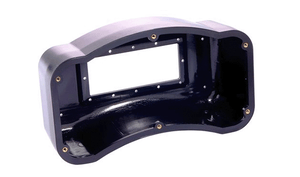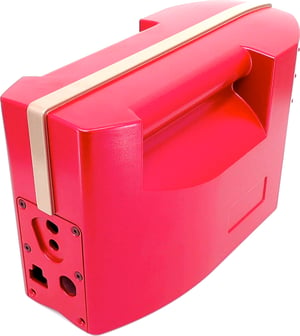Choosing to outsource your assembly operation is one of the strategies that McKinsey and Gartner recommend for improved business resilience. Over ten years ago, Gartner said the 21st-century manufacturing supply chain should operate as a demand-driven, value network. More recently, McKinsey similarly noted that “next-normal” supply chains are significantly more complex with resilience, sustainability, and agility fitting in between the traditional areas of focus like service, quality, and cost vs. capital.
 The good news is, if you are reading this blog you’ve probably already realized the value that outsourcing your plastic product assembly operations can add to your organization. The next step is asking the right questions when evaluating potential manufacturing partners and identifying any strategic advantage they bring to your operations compared to other firms. Here are some of the main questions we regularly field from our customers.
The good news is, if you are reading this blog you’ve probably already realized the value that outsourcing your plastic product assembly operations can add to your organization. The next step is asking the right questions when evaluating potential manufacturing partners and identifying any strategic advantage they bring to your operations compared to other firms. Here are some of the main questions we regularly field from our customers.
What Questions to Ask Potential Plastic Product Outsourcing Partners
In a McKinsey survey from 2021, 50% of supply chain executives reported that they knew the operational capabilities and risks faced by their tier-one suppliers. However, when it came to the next level tiers, only 2% could make the same claim. When assessing potential partners, you should dig deeper into their operations, capabilities, and supply chain assurances to ensure they can mitigate your risks.
In line with these considerations, we’ve assembled the primary questions that you need to ask when vetting potential manufacturing and assembly partners.
 Can You Handle Complex Part Designs?
Can You Handle Complex Part Designs?
 Part complexity comes down to sizes, features, textures, and performance requirements. Some designs will require structural support elements like ribs, gussets, and threaded inserts. Others may need secondary operations such as painting or coating to provide specific functionality (e.g. EMI shielding).
Part complexity comes down to sizes, features, textures, and performance requirements. Some designs will require structural support elements like ribs, gussets, and threaded inserts. Others may need secondary operations such as painting or coating to provide specific functionality (e.g. EMI shielding).
It’s best to dive into this question first, as many manufacturers of plastic assemblies won’t be able to handle complex parts. Size is of particular importance, especially when you are manufacturing parts for automotive, mass transport, or medical device applications.
 What Industries Do You Currently Serve?
What Industries Do You Currently Serve?
Following on complexity, it’s good to know what industries currently utilize the manufacturer’s services. As mentioned above, complex assemblies are common in the transport, automotive, and medical sectors. If the company can handle these designs, they should be able to supply quality plastic parts for your assemblies.
Two specific industries you may want to highlight are Electric Vehicles (EVs) and automotive parts. In these applications, the total weight compared to the structural performance of the part is integral to the performance of the vehicle. Lightweight parts with uniform wall thickness and additional structural supports are common in these industries, and you want to ensure that the manufacturer can accommodate these design characteristics.
 How Reliable is Your Supplier Network?
How Reliable is Your Supplier Network?
While some supply chain disruptions are unavoidable, your manufacturer should have the necessary contingencies in place to avoid delays. Having a reliable supplier network means being able to source materials from a variety of providers, and buy at sufficient quantities to prevent sudden cost increases.
Prices of raw materials and the production of the polyethylene/polypropylene required for forming plastic products remain a challenge. Any manufacturing partner you select should have adequate strategies to deal with material management and organization to ensure you receive your orders within the specified timeframes and without additional costs.
 Will You Recommend Design Changes That Improve the Manufacturing Cycle?
Will You Recommend Design Changes That Improve the Manufacturing Cycle?
 Everything from part geometry to material selection and secondary operations can affect the manufacturing cycle’s maximum throughput. Making small design changes may improve the cycle time of the part, and could also provide cost and schedule benefits.
Everything from part geometry to material selection and secondary operations can affect the manufacturing cycle’s maximum throughput. Making small design changes may improve the cycle time of the part, and could also provide cost and schedule benefits.
Optimizing the design for manufacturability is an iterative process. Your partner should have extensive knowledge about the forming, assembly, and finishing procedures to help guide you through the process and arrive at a cost-effective design without compromising on quality or functionality.
 What Limitations Should I Expect Compared to an Injection Molded Part?
What Limitations Should I Expect Compared to an Injection Molded Part?
With the right manufacturing partner, you won’t need to make any concessions compared to injection molding your part. The draft, draw ratios, radii, reveal, and textures should all be possible regardless of the part’s complexity, size, or functionality.
With thermoforming, machining, and secondary operations, there are a variety of ways you can achieve the same results at the required volumes that suit your product’s design intent. When discussing your requirements with a manufacturing and assembly organization, ensure they can deliver the same form, fit, and function as an injection molded part.
Skip the Formalities and Get in Touch with Kenson Plastics
At Kenson Plastics, we don’t just field these kinds of questions daily but also tell prospective customers what they haven’t thought of asking yet. Our capabilities span the entire lifecycle of the project, with your product and its quality our only concern. With shorter lead times, expert analysis of the part design, and a willingness to do what our competitors won’t, Kenson is the first call you should make when you want to outsource your assembly operation to a manufacturing partner.
Kenson Plastics can help you implement the best outsourcing strategy in the shortest time. Get in touch today to find out how we can assist.




 The good news is, if you are reading this blog you’ve probably already realized the value that outsourcing your plastic product assembly operations can add to your organization. The next step is asking the right questions when evaluating potential
The good news is, if you are reading this blog you’ve probably already realized the value that outsourcing your plastic product assembly operations can add to your organization. The next step is asking the right questions when evaluating potential  Part complexity comes down to sizes, features, textures, and performance requirements. Some designs will require structural support elements like ribs, gussets, and threaded inserts. Others may need secondary operations such as painting or coating to provide specific functionality (e.g.
Part complexity comes down to sizes, features, textures, and performance requirements. Some designs will require structural support elements like ribs, gussets, and threaded inserts. Others may need secondary operations such as painting or coating to provide specific functionality (e.g.  Everything from part geometry to material selection and secondary operations can affect the manufacturing cycle’s maximum throughput. Making small design changes may improve the cycle time of the part, and could also provide cost and schedule benefits.
Everything from part geometry to material selection and secondary operations can affect the manufacturing cycle’s maximum throughput. Making small design changes may improve the cycle time of the part, and could also provide cost and schedule benefits. 